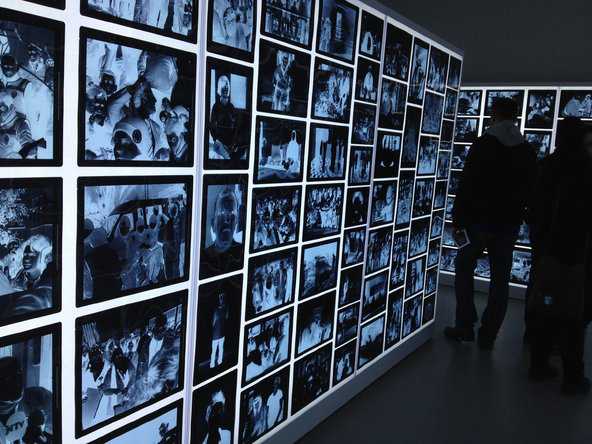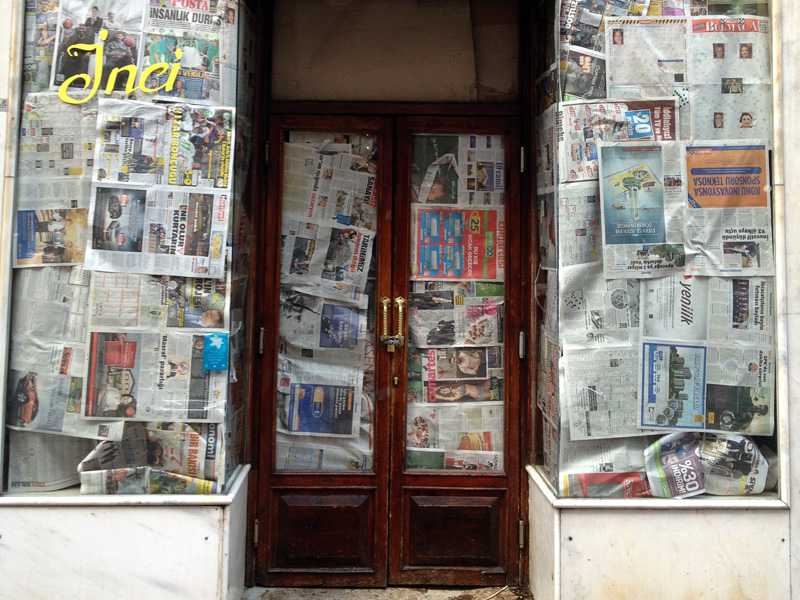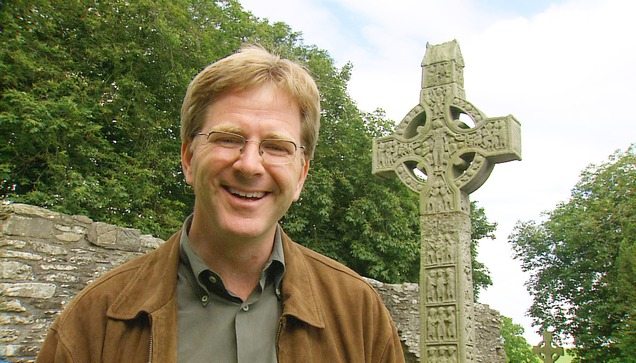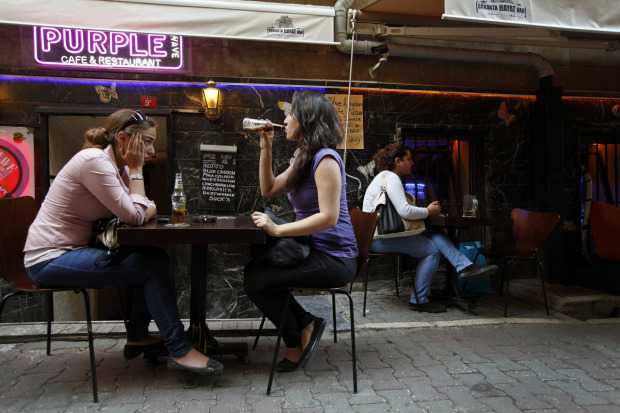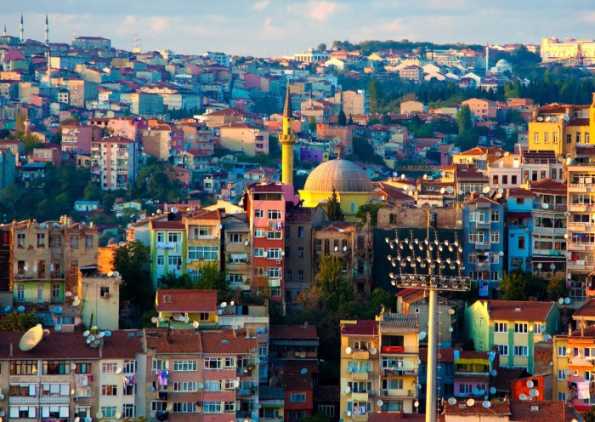 MBCH An aerial view of Istanbul, Turkey.
MBCH An aerial view of Istanbul, Turkey.
Published on Tuesday 6 December 2011 15:51
Cold weather, cultural clashes and cuisine worthy of Sultans follow Sarah O’Meara around her week-long tour of Istanbul.
A wise restaurant manager once told me Turkey enjoys what residents call ‘a posthumous summer’. Mid-way through October, a brief cold and often very wet snap descends before the thermostat resets and Turks enjoy another bout of late autumnal heat ahead of winter’s final chilly victory.
Unfortunately, this sage came into my life too late for me to pack a brolly for my recent week-long trip to Istanbul. Dripping wet, my husband and I heard the story on our first night in the city, along with the only other couple who’d ventured out to Asitane restaurant that stormy night.
“We’ve had 21 couples cancel,” explained the manager of the authentic Ottoman restaurant. Still, a steaming plate of fruity lamb nestled in a carved-out melon (a dish first served by Sultan Suleiman to celebrate his sons’ circumcision in November 1539, apparently), did something to dry our dampened spirits.
For thousands of years, emperors, sultans and their millions of loyal citizens have enjoyed the very special Bosphorus riverside location of Istanbul, which is at its best when the sun’s out and the water twinkles with optimism.
While it may no longer be the seat of a grand continent-spanning empire – as Constantinople (now Istanbul) was during the Roman and subsequent Ottoman period, from 1453 until 1923 – it still hums with optimistic energy on both its European and Asian shores.
In keeping with her Asian neighbours, Istanbul’s 12 million residents, up from three million in the 1970s, are enjoying an economic boom.
Sadly for the tourists who jostle out of the many mosques and palaces, this can mean mayhem. The quickest way for visitors to burn through their money is in a taxi, as the city’s inadequate transport system means the roads are in gridlock most of the time.
If you’re in Istanbul for a whistlestop tour, it’s probably easiest to stay bang in the centre, within tram-riding distance of the historic districts (Sultanahmet) and the modern bars and shops (Beyoglu).
For those in need of a treat, last year the Pera Palace Hotel opened its doors after a two-year restoration. The famous 1892 hotel, which originally provided the last destination stop for travellers arriving on the Orient Express, is a tribute to the city’s first forays into fashionable Western living.
Tasteful and effortlessly elegant, a few nights staying in the most refined hotel in town, faithfully furnished with antique bureaux and marble-clad bathrooms, will transport you back to those more glamorous times when Greta Garbo, Ernest Hemingway and Sarah Bernhardt stalked Europe’s capitals looking for inspiration and the high life.
Indeed, Room 411 is believed to be the place where Agatha Christie wrote Murder On The Orient Express.
Sitting on your French balcony, you’ll see Istanbul’s housing skyline stretching far into the middle distance. Yet the areas of interest for tourists are relatively self-contained nearby.
Probably the best decision we made, after buying an umbrella, was investing in a tour guide. It’s no mean feat absorbing the city’s history, which stretches from the moment Roman emperor Constantine I designated it his new Christian capital in the 7th century, to the eventual fall of the Islamic Ottoman empire, while still enjoying the sights.
And a guide’s also useful for pointing out the best place to eat really nice kofte (meatballs) or lahmacun (Turkish-style thin pizza) for lunch.
For tourists who don’t want to spend all their time sightseeing, you can take in the top three sights in a day. Topkapi Palace, home to the Ottoman Sultans, complete with harem; the Hagia Sophia, an impressive cathedral turned mosque, before being declared a museum by Ataturk, and the Blue Mosque are all within walking distance. Very handy if you’re just there for the weekend.
Each building is a tribute to the vision of the country’s rulers, with The Blue Mosque (officially called the Sultan Ahmed Mosque) in particular drawing the eye with its six minarets, just one less than the most prestigious mosque in Mecca.
If you’ve got more time in town, then take advantage of Istanbul’s location spanning the Bosphorus river. Along the coast on both the European and Asian sides are fishing villages boasting charming restaurants and relaxing views.
After a day of sightseeing, there’s one Turkish tradition that should definitely be adhered to. Whether you prefer to try the communal bath approach or high-end treatment, a Turkish hammam is an exquisitely quirky affair.
Halfway between a wash and a massage, depending on your budget, these traditional baths can be found all over the city.
For a personal, delicate treatment, head to the beautifully renovated Ciragan Palace (
Afterwards we dined overlooking the Bosphorus at the hotel’s Tugra restaurant, enjoying one of the most romantic locations the city has to offer.
Halfway through the week we left the city centre behind and sought out a boutique hotel on the Asian side of Istanbul.
The Hotel A’jia is a serene former ‘yali’ (palatial summer mansion of the Ottoman elite) that is a 90-minute drive from Sultanahmet or one-hour boat journey.
All modern lines, white walls and contemporary art, it’s the ideal place to chill out, with the skyline of Istanbul printed along the glass wall of your room.
Once ensconced, our one venture out was to join the glitterati for the night at Mimolett, Istanbul’s closest hope for a Michelin star.
A pet project for head chef Murat Bozok, into which he has reportedly poured his heart and the contents of his wallet, it’s worthy of Mayfair with its mirrored walls, splendid modern chandeliers and tantalising menu.
Allow more than a few hours at this stunning restaurant to devour dishes such as spicy tuna with olive and eggplant paste and savour splendid Turkish Kayra Chardonnay.
Then head out for a digestif at one of the city’s many rooftop bars, such as Zoe’s just round the corner (
Key facts – Istanbul
:: Best for: History buffs and bar flies.
:: Time to go: Late spring or summer.
:: Don’t miss: A rooftop bar.
:: Need to know: Cabs are expensive and traffic jams common.
:: Don’t forget: To book a guide – visit
Travel facts
Sarah O’Meara was a guest of Pera Palace, where double rooms start from 200 euros, and Hotel A’jia, where rooms start from 270 euros, including breakfast.
Return flights with Pegasus
